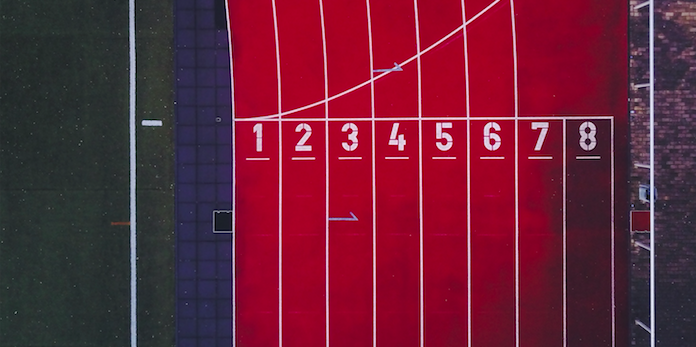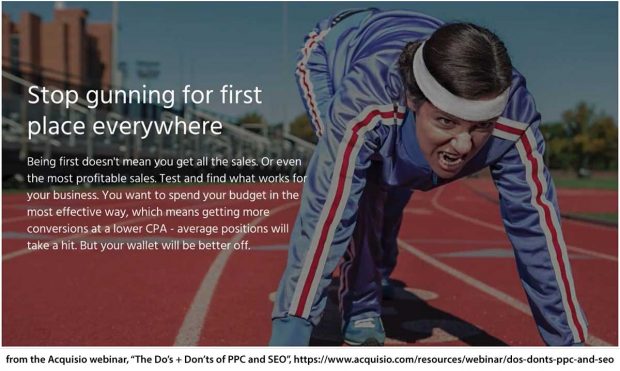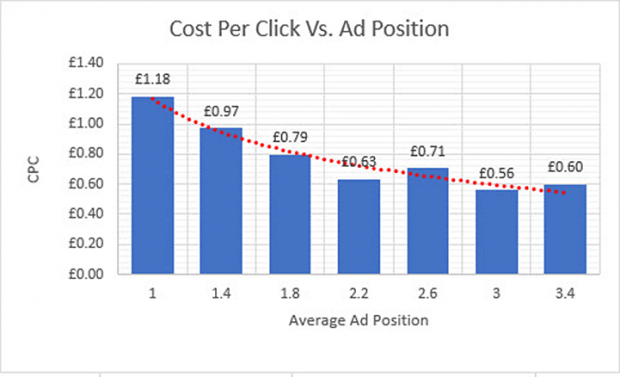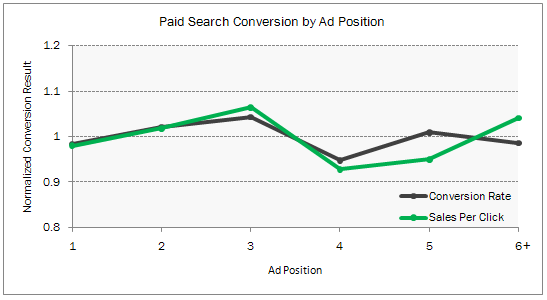First place. It’s the best place to be, right?
It’s the blue ribbon prize, the top of the heap.
All those perceptions about first place might be fine if you’re competing in a race or a bake off, but pay per click advertising is not that type of competition.
The goal in pay per click is not to get the most clicks. It’s to generate business. Real revenue. As affordably as possible.
Unfortunately, first position is not usually a great place to generate business revenue as affordably as possible. And even more unfortunately, many PPC marketers don’t seem to know this, and as a result they’re wasting an awful lot of advertising budget.
As Marc Poirier, Co-founder of Acquisio, says in “The Do’s + Don’ts of PPC and SEO”,
Everybody has a budget to respect. If you’re deciding to pay the maximum amount of money for every keyword you’re interested in, you’re going to end up depleting your budget rapidly, and probably not having great results.
Of course, it is true that if your ad is in first position, you’ll get a lot of clicks. You’ll actually get far more clicks than if your ad was in any other position.
According to one study, the average click-through rate for Google Ads in first position is 7.94%. The average click-through rate for all Google Ads generally is 3.16%.
The chart below shows how quickly the click-through rates drop off as the ad positions appear lower on the page. This is almost exactly what happens with click-through rates in organic search results, too.
So that is one advantage of first position pay per click ads. You’ll get a lot more clicks.
But unfortunately, you’ll also pay a lot more for those clicks.
A pay per click study from one UK agency found that clicks tend to cost much more if they’re from an ad in the first position.
Take a close look at the chart above. A click from the first position pay per click ad costs £1.18. A click from an ad in position 2.2 costs £.63. That’s nearly double the cost!
Are these very expensive clicks worth it? Well, it depends on your business. But more generally, it depends on what kind of conversion rate you’re getting per click.
If clicks from ads in position one converted better, they might well be worth the extra cost. (The significant extra cost.)
But they don’t. There’s a general consensus among pay per click marketers that – as a rule – no particular ad position converts best. Even Google has said conversion rates don’t vary much across ad positions.
So if cost per click and click-through rates tend to go up the closer your ads get to position one, but conversion rates tend to stay the same for each ad position, then maybe the best place to be is somewhere in the middle at an ad position that gets a good amount of clicks, but clicks that are affordable enough to maximize your ad spend.
Ends up, that’s almost exactly what two different studies have found. That same UK agency did some calculations and found that the most profitable position to be in is around 3.6.
Another similar pay per click study done by Merkle came to a similar conclusion. According to their data, position three converts best.
Now, does that mean you should change all your ads so they show in position three to 3.4?
No. All these studies are interesting, but take them with a grain of salt.
Here’s why: your Google Ads account wasn’t included in the data sets of these studies. And while best practices are usually a good place to start with optimization, they are not gospel. You need to be looking at your own account, your own reports, and do what works best for you.
In fact, if you dug deeper into the UK report, you’d see that their recommendations for the best ad position vary a bit depending on your Google Ads account’s typical conversion rate. They say that if you have a very good conversion rate, a slightly higher position (even up to position 1.8) might be the most profitable place to be. But if you have a conversion rate that’s lower than average, you’d probably be more profitable with a lower ad position, like around position five.
Because of all these different conditions, you can probably see why we can’t just say “optimize for position 3.4!” and be done with it. Every account is different. And every campaign and ad group in each account is different. Even every keyword is different – keywords do not all convert at the same rate.
When Position One Makes Sense
All this isn’t to say your ads should never be in first position. With branded searches, for example, it makes a lot of sense to want to be in first position. You don’t want a competitor’s ad to show above yours if someone has just searched for your brand name, or for the name of one of your flagship products.
So we’re not saying you should never aim for first position PPC ads. But be conscious about the costs when you do it, and don’t overpay just because your ego (or your CEO’s ego) is involved, or you just feel like you have to get as many clicks as possible.
The goal of PPC is not more clicks. It’s more sales.
About Keeping Your Ads in the Optimal Positions
If you’re the person managing your company’s pay per click accounts, this new information about ad positions might give you a little consternation. It’s not like you didn’t already have enough factors to optimize for.
But your optimizations don’t have to be perfect. And the decisions for how you optimize shouldn’t be ruled by ad position. Now that you know how it works, just pay attention to the fact that the higher your ads appear, the more you could be paying for each click.
Of course, all those optimization factors are why there’s an advantage to using an AI algorithm for managing pay per click accounts, and letting it make most of the micro-decisions required to run your campaigns.
An algorithm can do a better job than a human at crunching all the profitability factors for each ad and each keyword. It can adjust bids on a moment-to-moment basis, rather than having ads run for days before a human can adjust a bid in a really large account. And the AI won’t skip a beat when a new advertiser drops into the ad ranking and screws up all the past calculations. It’ll just run all the calculations again, instantly, while we humans focus on the things the AI still can’t do.
Like winning bake offs. 🙂
Image Credits
Featured Image: Unsplash/Photo by Marvin Ronsdorf








